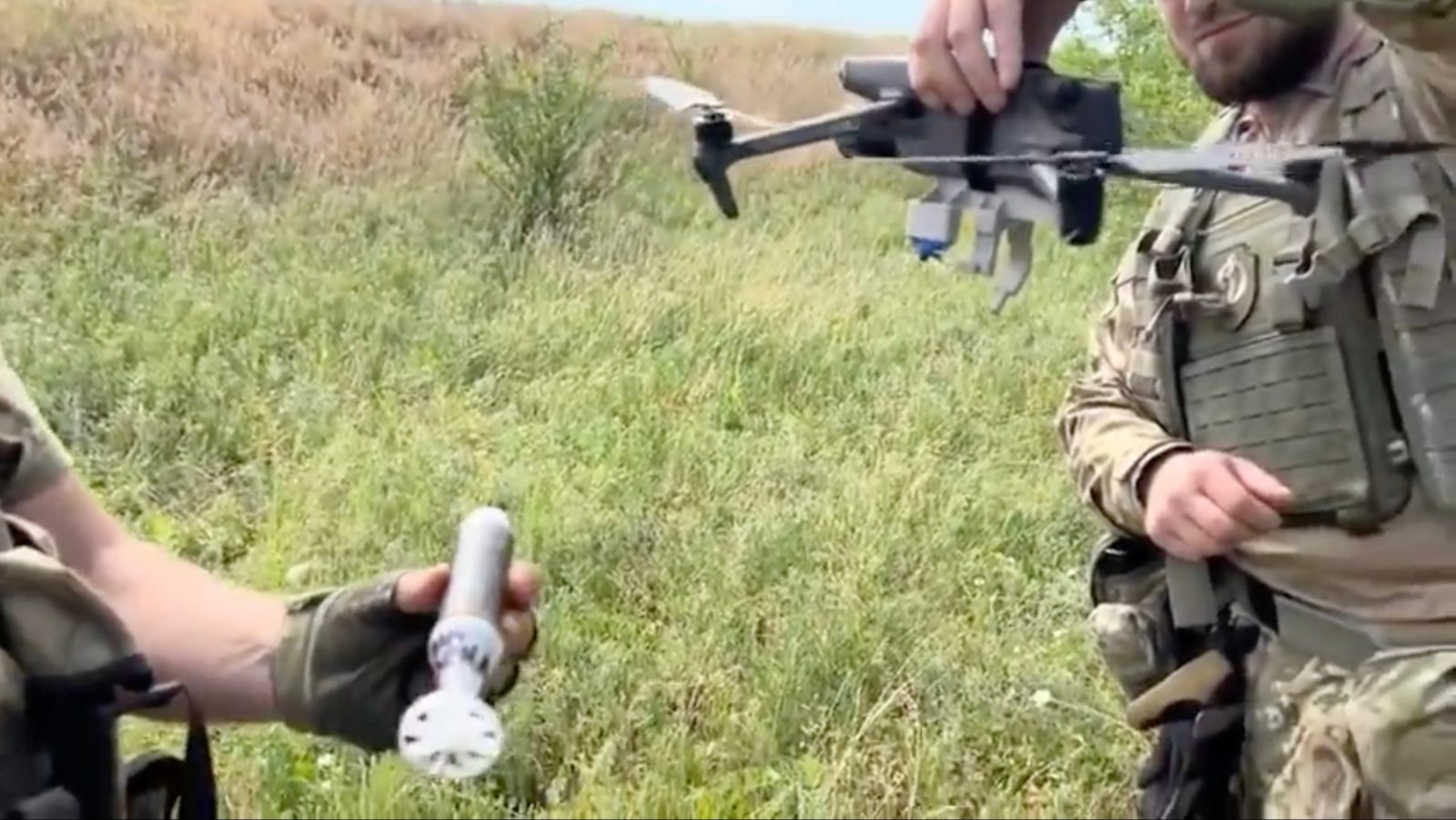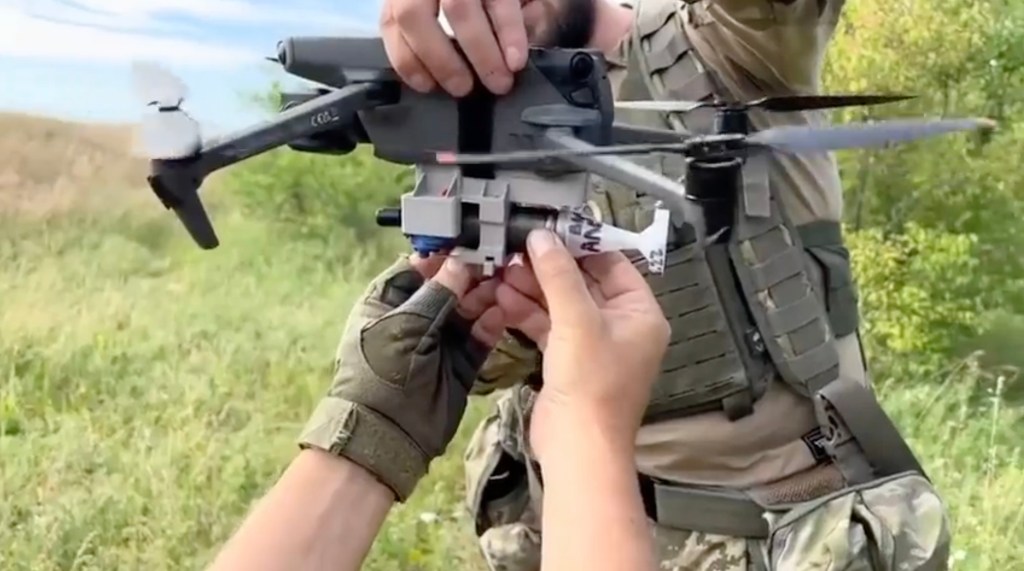
Call it purely anecdotal if you must, but recent images are offering another example of the contrasting ways Ukraine and Russian troops are adapting consumer drones for combat against one another – and distinguishing the latter as at times remarkably bumbling, low-tech innovators.
Military geeks in Moscow have been taking it on the chin since Russia began its invasion, with videos by Ukraine troops inspecting supposedly military-grade Orlov-10 drones they captured revealing astonishingly slap-shod, jimmy-rigged assemblies. Those included parts duct-taped into place, a Canon DSLR camera filling in as a sensor, and in one instance a plastic water bottle used as a gas tank.
Read: Bird-flipping Russian soldier ‘fingered’ by Ukraine drone
Ukraine mockery of their Russian enemies presumably increased further this week, when the UK’s Sun newspapers ran a story – photo up high – reporting a downed, Russia-flown Mavic 3 drone had used a paper coffee cup to carry its unpinned grenade payload. The (open air quote) delivery device (close air quote) was described as a nylon cord dangled beneath the craft.
“We are not sure how they are supposed to work,” the paper quoted a Ukraine commander after the drone was shot down not far from Russian lines. “But we know that this one failed.”
In the sake of fairness – and cognizant of the flow of disinformation both sides in the conflict have disseminated to influence public opinion – it should be noted that the photo accompanying the story contains no trace of the munition nor markings confirming the DJI craft was being used by Russian forces, and features a paper cup that could have come from anywhere.
The image does, however, jibe with reports that Russian troops initially expected to overrun Ukraine in a matter of days were sent in minimally equipped. Those have increasingly exhaustied those supplies as the conflict endures, and are having to make due with whatever they can – including consumer drones and, apparently, hot beverage receptacles.
It also seems to reaffirm deepening perceptions that armed forces and private citizens active in Ukraine’s defense against Russian invaders have been remarkable in adapting and enhancing commercial drones and their onboard tech for strategic and combat purpose – and continue doing that in slicker and more effective ways than their foes.
Read: Ukraine teen and his drone doom Russian convoy nearing Kyiv
That was demonstrated anew in a video uploaded on Reddit over the weekend. It shows a Ukraine unit loading a syringe-like VG18 self-detonating grenade on a drone outfitted with what appears to be a specially designed, machine-produced delivery system, before the UAV is sent off in search of Russian targets.
“From what I understand they use the light that’s under the belly of the drone to activate a light sensor which activates a motor that lets the bomb fall free,” offered commentor Dusty1000287. “Could be a different method but that’s the most reasonable solution in my mind.”

However it operates, it sure is a lot more impressive – and has to be more efficient – than a rope-dragged coffee cup.
FTC: We use income earning auto affiliate links. More.
Comments